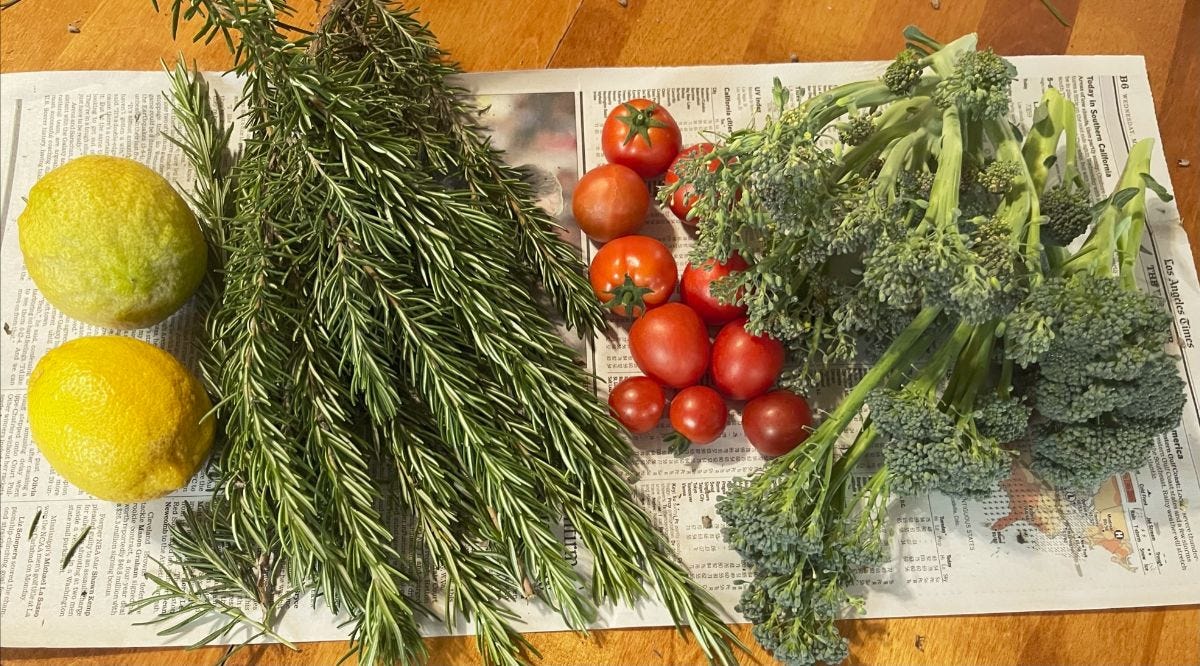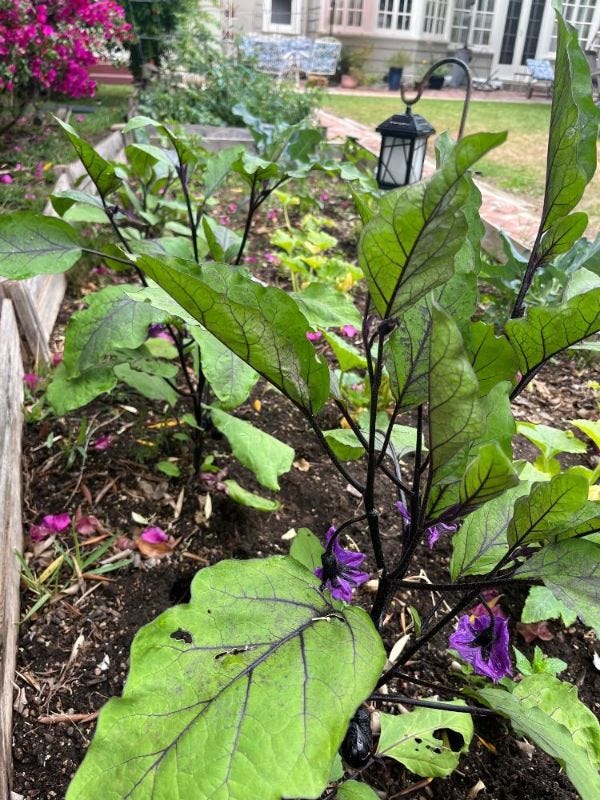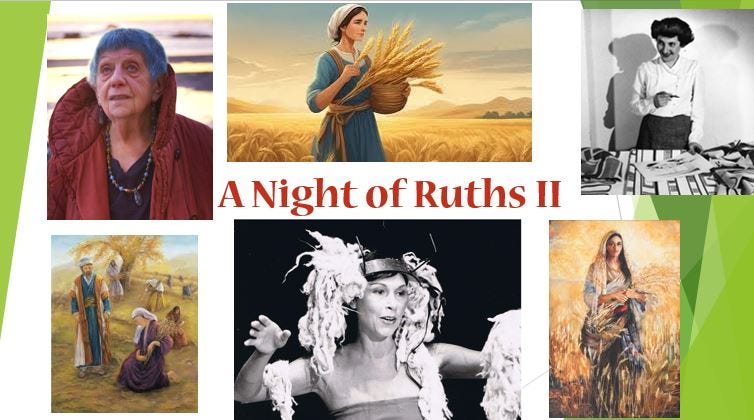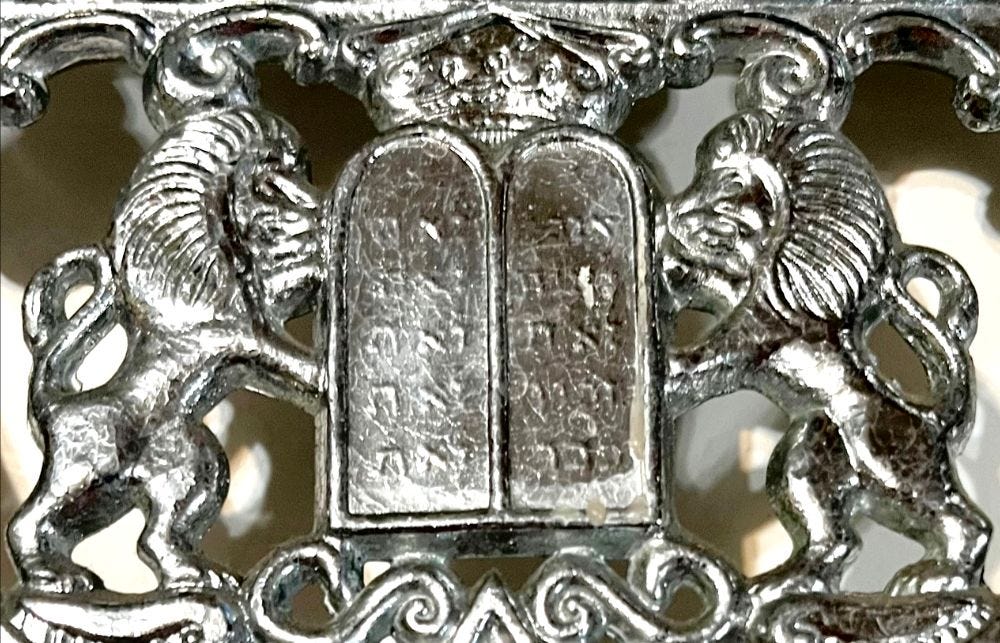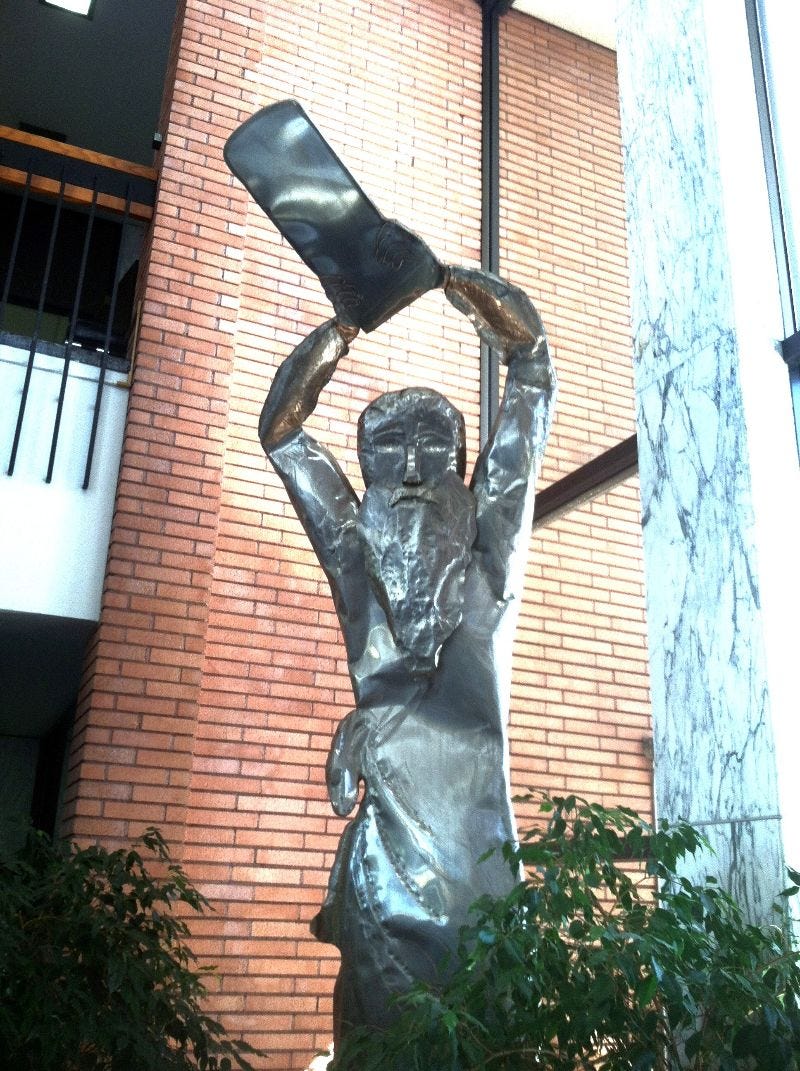Thou Shall Eat Cheesecake
A New Scroll of LA Jewish News
Folks,
A good slice of cheesecake hits like a revelation. Is that why we love to eat it on Shavuot? Are we hoping for a taste of heaven? Brought to the U.S. by Jews from Central and Eastern Europe, it’s not really a cake, or a pie, but something in between. Maybe we see ourselves in it. Like ourselves, there’s a lot going on beneath a smooth exterior. Cheesecake recipes often appear in the Jewish press for Shavuot, a holiday when dairy is eaten, and where cheesecake calls to mind the Torah’s promise of a land “flowing with milk and honey.” But sometimes we don’t go with the flow, and we require the tang of cheese to counter the taste of honey.
…MegilLA presents a complex flavor as well, one that you can’t find in the usual Jewish press. Can you help to keep it on the shelf? If MegilLA is worth reading, and re-sending to your friends, then it’s worth a paid subscription. Please become a paid subscriber today!
Shabbat Shalom & Chag Sameach.
Edmon J. Rodman
////\/\\\\
////\/\\\\
Will we get our first fruits?
This year's first fruits from our garden and yard.
Edmon J. Rodman
In the weeks before Shavuot, there was a battle going on in our garden over who, or what, would get our first fruits.
In ancient days in Israel, beginning at Shavuot (which begins Sunday night, June 1) — the holiday that marked the wheat harvests as well as the giving of the Torah on Mount Sinai— people brought to the Temple in Jerusalem an offering from their first harvest. The practice is reflected in one of the holiday’s alternate names, Yom Habikkurim, the Day of the First Fruits.
My wife and I like to embrace the harvest theme, too. This year we were able to plant, before the later rains, hoping that some of our plantings of tomatoes, broccoli, squash, and chili peppers would be ready by the holiday.
That is until a raccoon began digging up our garden beds every night searching for grubs.
In Deuteronomy, there is an entire ceremony for offering these first fruits. Farmers are required to say a prayer as a reminder that God “brought us to this place and gave us this land, a land flowing with milk and honey.” Though intended for an ancient audience in Israel, this idea of gratitude still resonates today.
One morning, as we sorted through havoc in the garden, I wasn’t feeling very grateful. Some plants were uprooted, others were buried, and I began to wonder if this was all worth it. After all, there was a Ralphs five minutes away from my home.
With so many convenient ways to get fresh food, and the Washington field of weedy politics superseding my garden woes, did we really need to be at war with nature over eggplants?
Couldn’t we offer something else, like the citrus growing in our yard? I didn’t need to read more about the new tariffs to know that lemons were in season.
Yet, there is something about getting down on your hands and knees in the dirt to plant a garden that makes you particularly grateful and mindful of the potential and fragility of life.
When we say Ha’motzi, we end the blessing with min ha’aretz, from the earth, and putting even one plant in the ground, literally grounds us, re-connecting us to what makes our lives possible.
Shavuot, with its harvest ritual, seems to tell us to be not just consumers but people who grow. Growing edible crops makes us aware of the conditions that put food on the table: Picking what to grow, laying out a garden returns a sense of order. Watching the plants grow brings a sense of wonder.
Then, like most everything else in life, there comes a raccoon.
First, we tried protecting many of the plants by crisscrossing the garden with old broom handles, and stray lumber, only to see them pushed aside the next morning, and more holes dug and plants uprooted.
Then we laid some tomato cages on their sides, creating a raccoon obstacle course. That helped, but each morning there were still fresh holes.
In a low-watt flash of inspiration, I planted one of those solar garden lights, one which gave off an orange-hued glow in the garden, and hoped for a miracle.
Growing and harvesting crops in an LA backyard is something of a miracle. My wife and I have watered and weeded often to bring in those tomatoes, and broccoli.
But we also understand that without a little help, everything can wither on the vine. Some might call a successful harvest the result of luck or great planning, or credit it to that most intangible of human qualities: a green thumb.
By the time Shavuot rolls around, I’m ready to give some thanks. After months of carefully watching, tending and coaxing, when your labor does bear fruit, you want to acknowledge where your mazel comes from. It’s time to celebrate and show gratitude for another season.
That, to me, is the meaning of Shavuot: giving thanks for being able to fill our baskets once again and sharing the bounty.
As for the critter control garden light, it worked for about two weeks. Then one morning, my wife found an eggplant uprooted.
But I am not deterred. On the night of Shavuot, when the heavens are said to open, allowing our prayers to go directly to the Holy One, I will pray that the racoon has a change in diet.
We have plenty of lemons.
////\/\\\\
On a night when we read the Book of Ruth...
Explore with us the amazing lives of prominent Jewish women
named Ruth.
When: First Night of Shavuot: Sunday, June 1, 8 pm
Where: At the J, 5870 W. Olympic Blvd 90036
Please bring a dairy or pareve dessert.
MOVABLE MINYAN.ORG
////\/\\\\
Debating a new classroom commandment
Edmon J. Rodman
While on Shavuot Jews celebrate the giving of the 10 Commandments, some in the Jewish community are casting an anxious eye on a movement to require the display of the Decalogue in the public schools of the United States.
As more state legislatures consider the passage of a classroom requirement, many Jewish leaders see the acts as a violation of the separation of church and state, as well as freedom of religion.
Two states, Louisiana and Arkansas, have already passed legislation requiring the display of the Decalogue in the classroom, and Texas, with 5 million students, is about to pass a law a well.
Though the issue has not reached the California legislature, in January 2025, the issue was debated at a meeting of the Kern County Board of Education, with no vote taken.
Many Jews are quite comfortable with seeing the 10 Commandments displayed in synagogues, or even worn as pendants, or clipped onto key chains, however, having them ordered by the state into classrooms presents serious issues of religious freedom.
The Anti-Defamation League for many years has said “No,” to the movement, reminding that “the Ten Commandments are ‘undeniably’ a religious text, and The Supreme Court and a number of lower courts evaluating permanent displays of the Ten Commandments have found that such displays have a predominantly religious purpose and violate the Establishment Clause” of the First Amendment of the U.S. Constitution.
In their response to the issue, The ADL has also said that “A temporary display of the Ten Commandments integrated into a secular curriculum such as history or comparative religion may be permissible.”
Generally, proponents of the new laws say the 10 Commandments have historical significance in the founding of the nation, and have influenced the American legal system.
Upon passage of the new requirement in Louisiana, Robert French, CEO of the Jewish Federation of Greater New Orleans stated that “We are deeply concerned by Louisiana’s recent law mandating the display of the Ten Commandments in every classroom.”
“While we hold the Ten Commandments in high regard within Judaism, seeing them as fundamental moral teachings,” French added, “we believe this mandate undermines the core principles of religious freedom and the separation of church and state that are essential to our democracy.”
Ultimately, both sides expect the issue will eventually come before the Supreme Court, which in 1980 ruled in a Kentucky case that mandatory displays of the Ten Commandments in public school classrooms were unconstitutional.
////\/\\\\
*LIVE FROM THE ARCHIVE:
Planting the seeds of sunshine
Edmon J. Rodman
Flowers for the holiday table add more than color to Shavuot, they connect with a very green chapter in LA Jewish history. Germain’s, founded by Swiss Jew, Eugene Germain in 1872, was one of the first LA businesses to figure out a way to regionally market the products of Los Angeles sunshine.
In 1968, the year the seed packs shown above were packed, the company, though no longer under family ownership, was still beautifying the yards and gardens of LA and beyond.
Originally a seller of dried California fruits, nuts, and wines, the Germain Fruit Company eventually focused on cultivating flowers, garden and landscaping plants in the surrounding area.
Through attractively illustrated catalogs, they sold both flowing plants, fruit trees, ornamental trees, like palms, as well as flower and vegetable garden seeds.
In 1889, the name was changed to the Germain Seed and Plant Company with Eugene Germain remaining president until 1893.
Occupying a series of progressively larger multi-story buildings downtown, Germain’s filled the needs of farmers, ranchers, and gardeners of the southwest.
From the end of the 19th century to the middle of the 20th, Eugene Germain, and his brother Edward, and later, Manfred Meyberg, supplied the city with the poppies, roses, jacarandas, birds of paradise, and coral trees; plants that still appear in our landscape today.
*The Rodman Archive of Los Angeles Jewish History is a collection of approximately 1500 objects, photos, clothing, art, books, recordings, and ephemera relating to the lives and endeavors of Jewish Angelenos between 1850 and 1980.
////\/\\\\
Seen on the way: Hebrew Union College
“Thou shall not lose thy temper,” as illustrated by this towering 18-foot-high metal sculpture of an overwrought Moses about to shatter the two Tablets of the Law, is not one of the 10 Commandments that we celebrate on Shavuot. The sculpture by the artist Pascal, on view in the lobby of the Jack H. Skirball campus of the Hebrew Union College Jewish Institute of Religion, near USC, stands as a reminder of a well-known Bible scene. Moses, after seeing the idol worship transpiring in the camp of Israel, “hurled the tablets from his hands and shattered them at the foot of the mountain,” says the Torah. Later, they were remade, and upon hearing the !0 Commandments at Mt. Sinai, Israel was remade as well.
////\/\\\\






